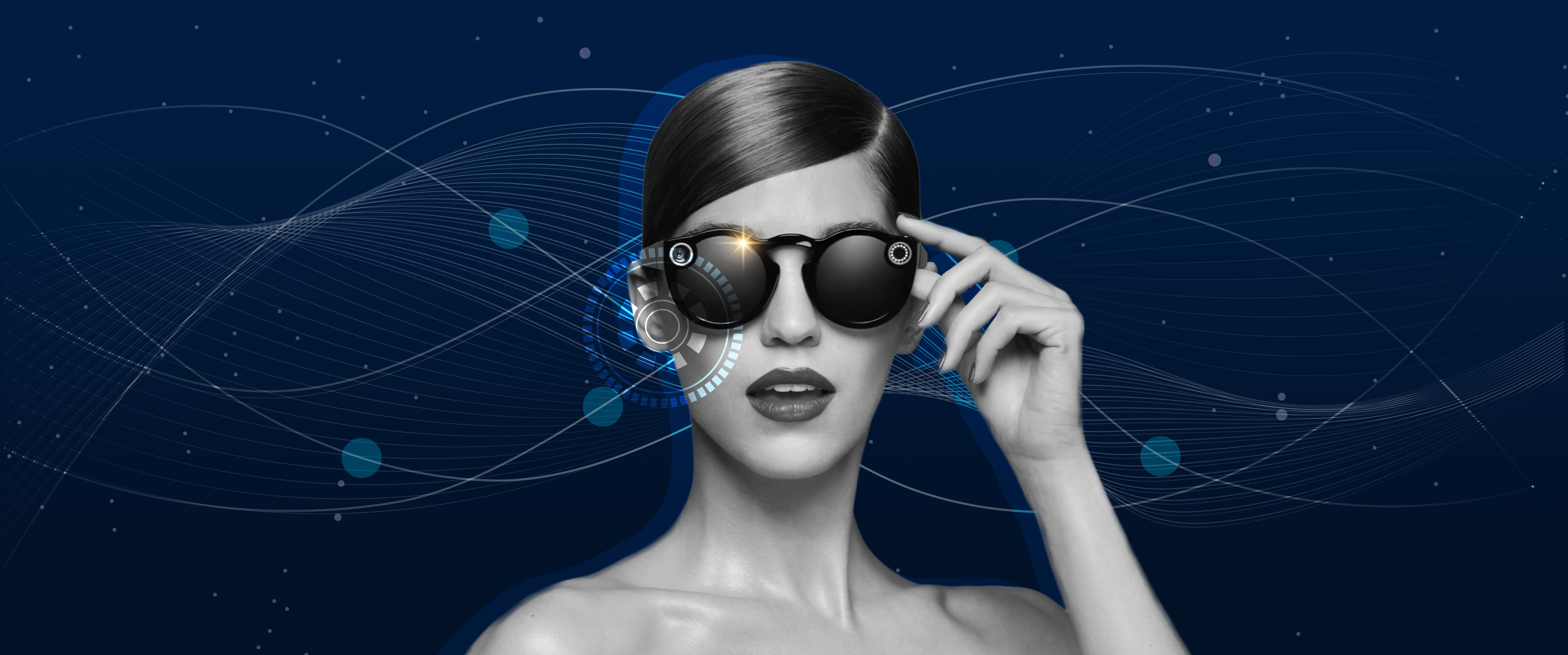In late 2020, Facebook recently announced that its first pair of smart glasses will be released sometime in 2021. We’re not exactly sure of the date yet, but we’re hearing “sooner than later” for the release. While I was initially excited for the announcement, that feeling quickly diminished when I read these glasses will not include augmented reality capabilities.
Here’s the official announcement from Mark Zuckerberg, which contains pretty much no real information about the smart glasses’ capabilities:
https://www.youtube.com/watch?v=tdj9U0pyem4
Sure, the partnerships with Ray-Ban and Luxottica are cool, but if I can’t integrate digital objects into the world around me, what’s the point? I’ve seen similar reactions to this announcement all around. Since the full capabilities of the new Facebook smart glasses haven’t been released yet, let’s take a look at some of the product’s competitors that are already on the market.
Microsoft HoloLens 2
The HoloLens 2 is Microsoft’s smart glasses offering. Released in late 2019, these glasses are focused on creating mixed reality experiences. This is the strongest of the options and also the most pricey at $3,500. These smart glasses feature a 2K display and are capable of eye tracking, accurate hand tracking, spacial audio, detecting real-world objects, and projecting holograms into your space for an immersive experience.
Now this is how you do a product release video.
The HoloLens 2 can be used for virtual training, as a hands-free interface in physical work environments, and for developing apps or games in Unity. This product is definitely geared towards the professional, not the standard creator. The lenses also feature a front-facing camera, allowing for video conferencing. Widely regarded as the most advanced pair of smart glasses, the Microsoft HoloLens 2 is a powerful, yet costly device.
Google Glass Enterprise Edition 2
I remember when Google Glass was first introduced—and how its moment of popularity felt more like novelty than tech innovation. (Perhaps it was a bit too early for its time.) Now, the most current version of Google Glass is functional, applicable, and still sleek in its design, featuring 720p video and voice control.
Priced at $999, the Enterprise Edition 2 is geared more towards the healthcare and manufacturing industries than personal use. Mainly, Google Glass is used to offer peripheral vision and notifications to people working physical jobs where both hands are required. It also can provide streaming video showing what the user is doing to others.
In the release video, Google highlights their glasses as a utility to enhance the healthcare and industrial professions, providing a better experience for all.
Snapchat Spectacles 3
The Snapchat Spectacles enter this list as the most affordable option—but still at a pricey $380.
I tried out the original version of these years ago, and while the product was fun, it didn’t have many capabilities. Compared to previous versions where the augmented reality asset existed on a 2D plane within the world, the new glasses have a second camera which allows for real-time 3D processing and depth perception. One can apply their snap filters to the real world through these lenses and have them interact with the space in front of them. (Users must use must use Snapchat’s Lens Studio to create experiences within their platform.)
With their reveal, Snapchat kept things quick, vibrant, and a little vague. Personally I appreciate how the visuals and capabilities speak for themselves, but I can see this being a bit confusing to someone who isn’t as familiar with the platform.
While I can’t see these ever being used in the same industries as Google Glass, it’s by far the strongest option for creatives. Being almost 90% cheaper than the HoloLens 2, the Spectacles 3 will allow creators to dive into creating immersive experiences without the hefty cost up front.
For now, I don’t plan to buy the new Facebook smart glasses. As a creator interested in AR, I’ve had my eye on the Snapchat Spectacles, but ultimately I think I’ll stay away from smart glasses for the time being.
When researching these products, I often found the general sentiment that smart glasses won’t become fully realized for another ten or so years—the hardware is just not fully possible with portable lenses yet. While the ideas are incredible, a lot of the immersive functionality is just not available compared to a full VR device like the Oculus Rift.
I’m excited to see how this trend changes as the technology becomes more accessible, but for the time being I’ll stick to using my smartphone.



